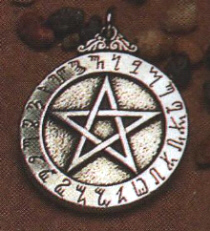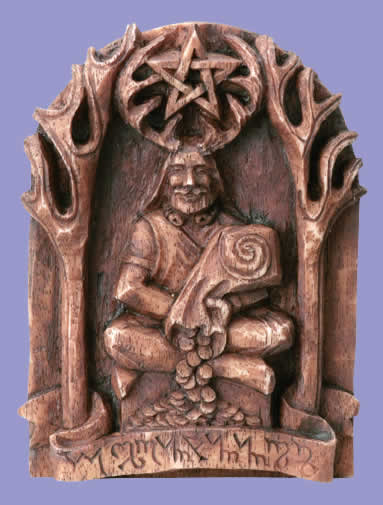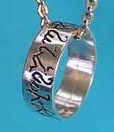THIS IS A DRAFT PROPOSAL
A. Administrative
|
| 1. Title |
Proposal to add the Theban Alphabet to ISO/IEC 10646 |
| 2. Requester's name |
Eric S. Raymond |
| 3. Requester type |
Expert contribution |
| 4. Submission date |
2002-26-02 |
| 5. Requester's reference |
|
| 6a. Completion |
This is a complete proposal. |
| 6b. More information to be provided? |
No |
B. Technical -- General
|
| 1a. New script? Name? |
Yes. Theban Alphabet. |
| 1b. Addition of characters to existing block? Name? |
No. |
| 2. Number of characters |
24 |
| 3. Proposed category |
Category B |
| 4. Proposed level of implementation and rationale |
Level 1. |
| 5a. Character names included in proposal? |
Yes |
| 5b. Character names in accordance with guidelines? |
Yes |
| 5c. Character shapes reviewable? |
Yes |
| 6a. Who will provide computerized font? |
Eric S. Raymond |
| 6b. Font currently available? |
Yes: see http://www.catb.org/~esr/unicode/theban/. |
| 6c. Font format? |
TrueType |
| 7a. Are references (to other character sets, dictionaries,
descriptive texts, etc.) provided? |
Yes. |
| 7b. Are published examples (such as samples from newspapers,
magazines, or other sources) of use of proposed characters
attached? |
Yes. |
| 8. Does the proposal address other aspects of character data
processing? |
No. |
C. Technical -- Justification
|
| 1. Has this proposal for addition of character(s) been submitted
before? |
No |
| 2. Contact with the user community? |
Yes. Proposer is a member of the user community. |
| 3. Information on the user community? |
Wiccans, neopagans, ceremonial magicians, occult scholars. |
| 4a. The context of use for the proposed characters? |
Used primarily for ritual formulae and talismanic inscriptions,
1300CE to present. Also in limited use as a manuscript cipher. |
| 4b. Reference |
See below. |
| 5a. Proposed characters in current use? |
Yes |
| 5b. Where? |
Practicing occultists and scholars of occult history. |
| 6a. Characters should be encoded entirely in BMP? |
Yes. (The proposed location is U+1380 to U+1396, filling a
two-column gap between Ethiopic and Cherokee). |
| 6b. Rationale |
Theban alphabet is in live use by a community of significant
size. |
| 7. Should characters be kept in a continuous range? |
Yes |
| 8a. Can the characters be considered a presentation form of an
existing character or character sequence? |
No. They are closest to being a Latin cipher, but lack U, W, and J
characters. Context of use is such that inscriptions written in Theban
are not considered equivalent to a Latin-alphabet transcription. |
| 8b. Where? |
|
| 8c. Reference |
|
| 9a. Can any of the characters be considered to be similar (in
appearance or function) to an existing character? |
No. |
| 9b. Where? |
|
| 9c. Reference |
|
| 10a. Combining characters or use of composite sequences
included? |
No |
| 10b. List of composite sequences and their corresponding glyph
images provided? |
No |
| 11. Characters with any special properties such as control
function, etc. included? |
No |
D. SC2/WG2 Administrative
To be completed by SC2/WG2
|
| 1. Relevant SC 2/WG 2 document numbers: |
|
| 2. Status (list of meeting number and corresponding action or
disposition) |
|
| 3. Additional contact to user communities, liaison organizations
etc. |
|
| 4. Assigned category and assigned priority/time frame |
|
| Other Comments |
|
E. Proposal
U+0001380 THEBAN LETTER A
U+0001381 THEBAN LETTER B
U+0001382 THEBAN LETTER C
U+0001383 THEBAN LETTER D
U+0001384 THEBAN LETTER E
U+0001385 THEBAN LETTER F
U+0001386 THEBAN LETTER G
U+0001387 THEBAN LETTER H
U+0001388 THEBAN LETTER I
U+0001389 THEBAN LETTER K
U+000138A THEBAN LETTER L
U+000138B THEBAN LETTER M
U+000138C THEBAN LETTER N
U+000138D THEBAN LETTER O
U+000138E THEBAN LETTER P
U+000138F THEBAN LETTER Q
U+0001390 THEBAN LETTER R
U+0001391 THEBAN LETTER S
U+0001392 THEBAN LETTER T
U+0001393 THEBAN LETTER V
U+0001394 THEBAN LETTER X
U+0001395 THEBAN LETTER Y
U+0001396 THEBAN LETTER Z
U+0001397 THEBAN EXTRA LETTER
U+0001398 THEBAN MEDIAL DOT
U+0001399 (This position shall not be used)
U+000139A (This position shall not be used)
U+000139B (This position shall not be used)
U+000139C (This position shall not be used)
U+000139D (This position shall not be used)
U+000139E (This position shall not be used)
U+000139F (This position shall not be used)
|
 |
The graphic is a facsimile of Agrippa's table. The "THEBAN EXTRA
LETTER" is listed after Z in Agrippa's table, but the meaning of the
bullet-like glyph beneath it is unknown. The extra letter is included in case
future research discloses a meaning.
When this script is used in languages that have a W sound, it is
common to write that as a doubled THEBAN LETTER U. In some inscriptions
a medial dot is used to mark word breaks.
F. A brief history of the Theban alphabet
(Note: This alphabet is widely called ‘Theban runes’
today, but this seems to be a recent invention by users who noticed
the usage parallelism with Futhark. The letterforms are actually
cursive rather than runic; they contain many curves and are not
well-suited to be incised or scratched into hard materials as are true
runic alphabets like Futhark, Ogham, or Tolkien's Cirthas Daeron. The
term ‘Theban runes’ is not attested before the 20th
century; older sources refer to either ‘Theban letters’ or
the ‘Theban alphabet’, the practice I have followed
here.)
The earliest known source for the Theban alphabet is Cornelius
Agrippa's Three Books of Occult
Philosophy first published at Antwerp, 1531. Agrippa gives
the Theban alphabet in chapter 29 of book 3 and writes "Of this kind
of character therefore are those which Peter Apponus notes, as
delivered by Honorius of Thebes".
This almost certainly refers to the author of the
early-14th-century Liber
Juratus, or the Sworne Booke of Honorius. (The better-known
"Grimoire of Honorius" is a 17th-century forgery long postdating
Agrippa.) However, the characters do not appear in any manuscript of
the Liber Juratus, nor in any edition of Peter Apponus, aka Peter De
Abano (whose only extant magical work is the Heptameron).
One clue suggesting the Theban alphabet is older still is implicit in
the Latin-alphabet equivalents given by Agrippa. The absence of U/J/W
suggests that the Theban alphabet originated as a Latin cipher before the
11th-century introduction of W and long before the late-15th-century
development of U and J.
The origin of the letterforms is obscure. They do not resemble any
of the scripts likely to have been known by Agrippa (Latin, Hebrew,
Arabic, or Futhark). There is a passing resemblance to the more
elaborate letters in the Avestan
or Pahlavi scripts used to write Old Persian. However, they are
obviously an invented alphabet rather than an evolution of Avestan;
they have too many superfluous flourishes of the sort natural
evolution would have worn away. All the evidence is consistent with
an origin as an early alchemical cipher alphabet influenced by
Avestan.
Near the end of the 1800s the Theban alphabet was adopted by the
Hermetic order of the Golden Dawn and its successor orders (notably
the Ordo Templi Orientalis or O.T.O.) from Agrippa (filtered through
later compilations plagiarizing Agrippa, notably Francis Barrett's
1801 The
Magus).
The Theban alphabet seems to have passed to the Wiccans from
successor orders of the Golden Dawn as part of the Gardnerian
reinvention of Wicca during the 1930s. Today they are primarily
associated with Wicca and indeed are sometimes referred to as the
"Wiccan alphabet".
The Theban alphabet has always been employed primarily for talismanic
inscriptions and magical formulae; also occasionally as a manuscript
cipher. It is not associated with any particular language. Most of the
early corpus was Latin, but modern usage is probably mostly in English.
Most Wiccans recognize the Theban alphabet, but the skill to sight-read
or write it without a reference is uncommon. Nevertheless, given the
estimate now usual among sociologists of religion that there are more than
half a million Wiccans in the U.S. alone, there may be as many as a
hundred thousand people worldwide who have employed it.
H. Rationale for the proposal
Distinctness: Theban runes are not merely a presentation form of
the Latin alphabet. The magical/liturgical context of their use is such
that a Theban inscription is not considered equivalent to its Latin
transcription. This case is paralleled by other living magical/liturgical
scripts such as Coptic and Arabic, and by dead ones such as Futhark and
Glagolitic.
Category: As a living ceremonial script, Theban runes belong in
the same category B with Coptic.
Level: Level 1; the script has no combining characters,
diacriticals, or control characters. It has been written both RTL and LTR,
the latter dominating (especially in modern usage).
I. Web resources
Stephan Baitz's free TrueType font is very close to the forms in Barrett's
1801 table. His zip file includes the font (with
encodings for Apple Roman and something called "Windows Unicode"). These
may be taken as representative.
A professional-quality Macintosh or Windows font, again very
closely resembling the Agrippine originals, is available from Deniart
Systems.
Coron's
Sources of Fonts includes a variant with
more angular forms.
J. Usage samples.
There have been uses as a manuscript cipher, but most Theban
inscriptions are short formulae written on magical paraphenalia; inscribed
into pentacles, etched on the blades of ritual daggers, embroidered on
cloaks and sashes, carved on candles etc. (The usage pattern is, as
previously noted, quite similar to that of Futhark.)
This use of Theban alphabet on a scrying pentagram illustrates
Futhark-like use on ritual objects. Pentagrams like this one are
common.
Here is a very similar design on an altar tile, usable for
sortilege divination:
An image of the Horned God Cernunnos with his name on the banner:
The inscription on this ring reads "To Encircle all Without
Beginning or End":
Here is an incised wand:
In this image of the leather cover of a Book of Shadows, note
the Theban-alphabet symbols near the edges:
This use of Theban alphabet on a talking board is also representative:
Eric S. Raymond, esr@thyrsus.com,
http://www.catb.org/esr







